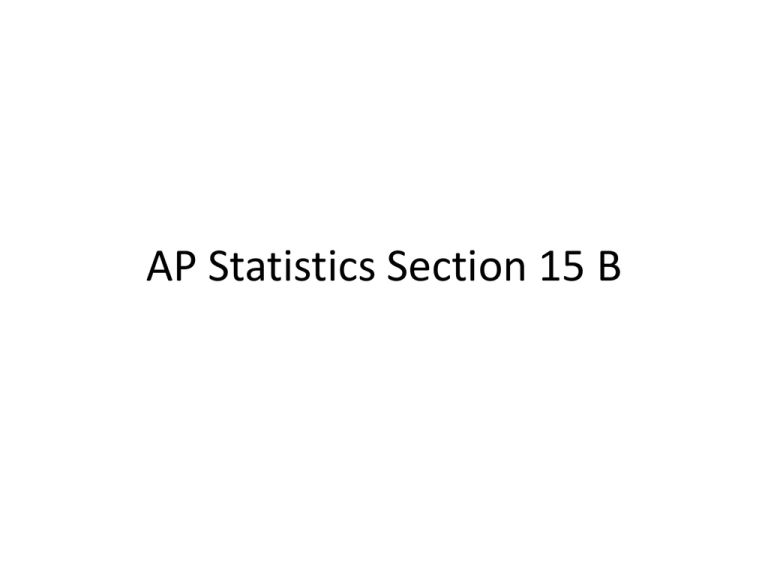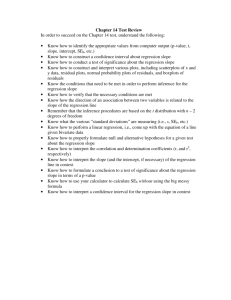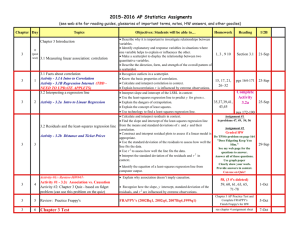PP Section 15 B
advertisement

AP Statistics Section 15 B Estimating the Parameters To estimate the true regression line y x , we will use the calculated least-squares regression line yˆ a bx . The y-intercept, a, will be an unbiased estimator of the true yintercept, , and the slope, b, is an unbiased estimator of the true slope, . The remaining parameter of the model is the standard deviation, , which describes the variability of the response y about the true regression line. We will estimate the unknown standard deviation by a sample standard deviation of the residuals (i.e. the standard error about the least-squares line) s yi yˆ residuals n2 n2 2 2 L3 L RESID ENTER Get L RESID through LIST STAT CALC 1 - Var Stats : L 3 ENTER To find s directly : STAT TESTS LinRegTTest Choose correct lists but nothing else matters at this point The slope, , of the true regression line is usually the most important parameter in a regression problem. The confidence interval for has the familiar form: estimate t SEestimate . Because b is our estimate, the confidence interval becomes __________. b t SEb In this expression, the standard error of the least-squares slope b is SEb s x x 2 When we do hypothsis testing : b test statistic : t SE b b SE b t Find using LinRegTTest and t* is the critical value for the t(n – 2) density curve with area C between –t* and t*. Example: Construct and interpret a 95% confidence interval for the slope of the true regression line for the crying baby/IQ scenario. children The population of interest is __________ Conditions: No mention of whether that sample was a SRS. If not results may not generalize to the population. Relationship appears linear Residuals appear approx normally distibuted but we do have an outlier. The residuals are fairly constant from small x to large x Example: Construct and interpret a 95% confidence interval for the slope of the true regression line for the crying baby/IQ scenario. SEb 1.493 .487 3.065 1.493 2.042(.487) .95 .025 df 38 2 36 t 2.042 .499,2.487 We are 95% confident that the mean IQ score increases by between .499 and 2.487 points for each increase of 1 in the crying intensity. The figure below shows the basic output for the crying study from the regression command in the Minitab software package. Regression Analysis The regression equation is IQ = 91.3 + 1.49 Crycount Predictor Constant Crycount S = 17.50 Estimates Coef 91.268 1.4929 StDev 8.934 0.4870 SEb T 10.22 3.07 P 0.000 0.004 Test Statistic P value







